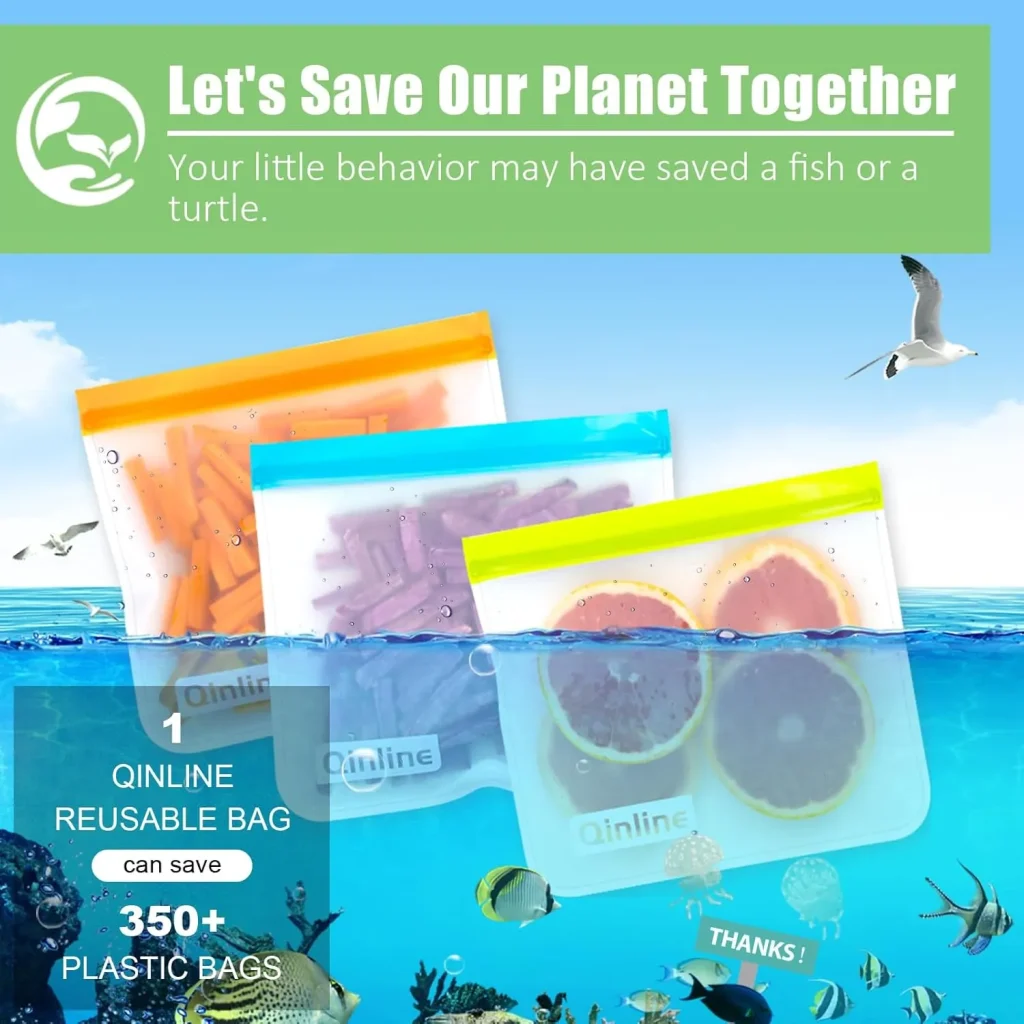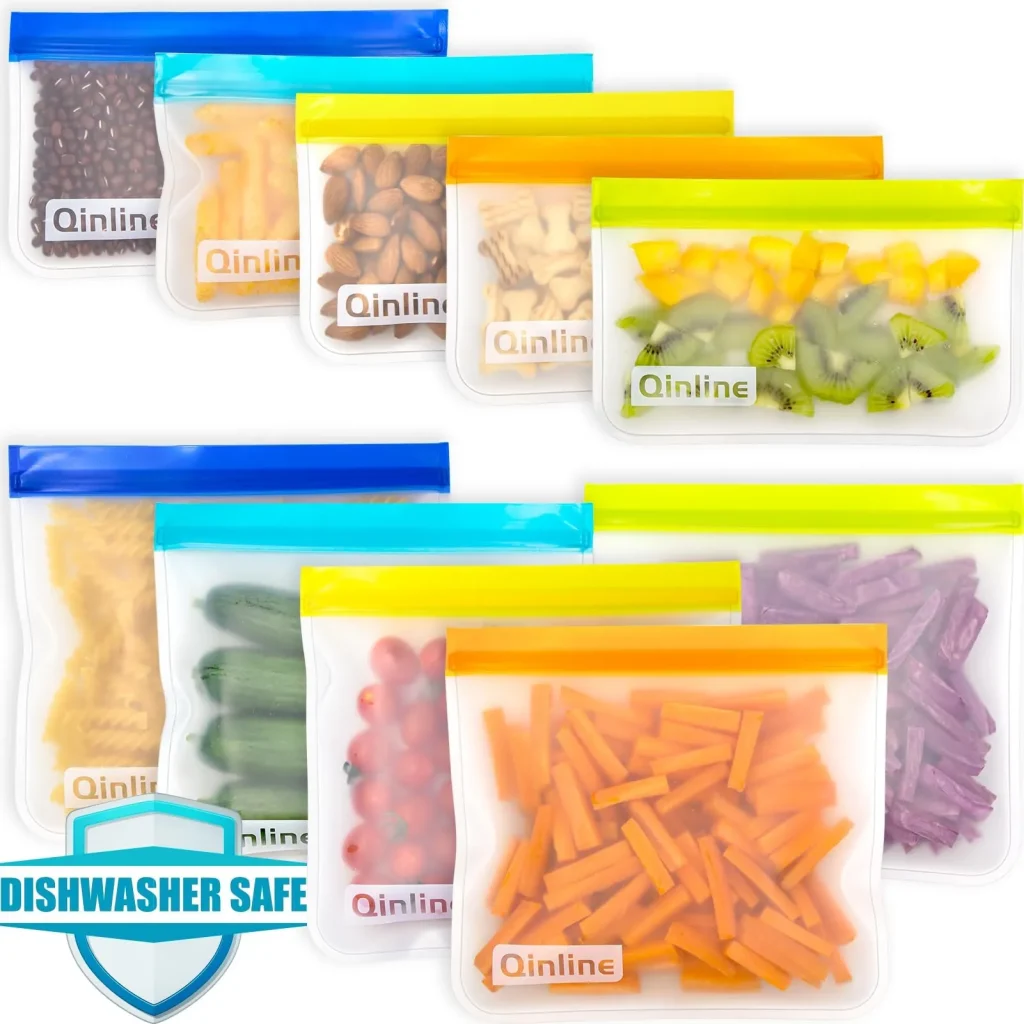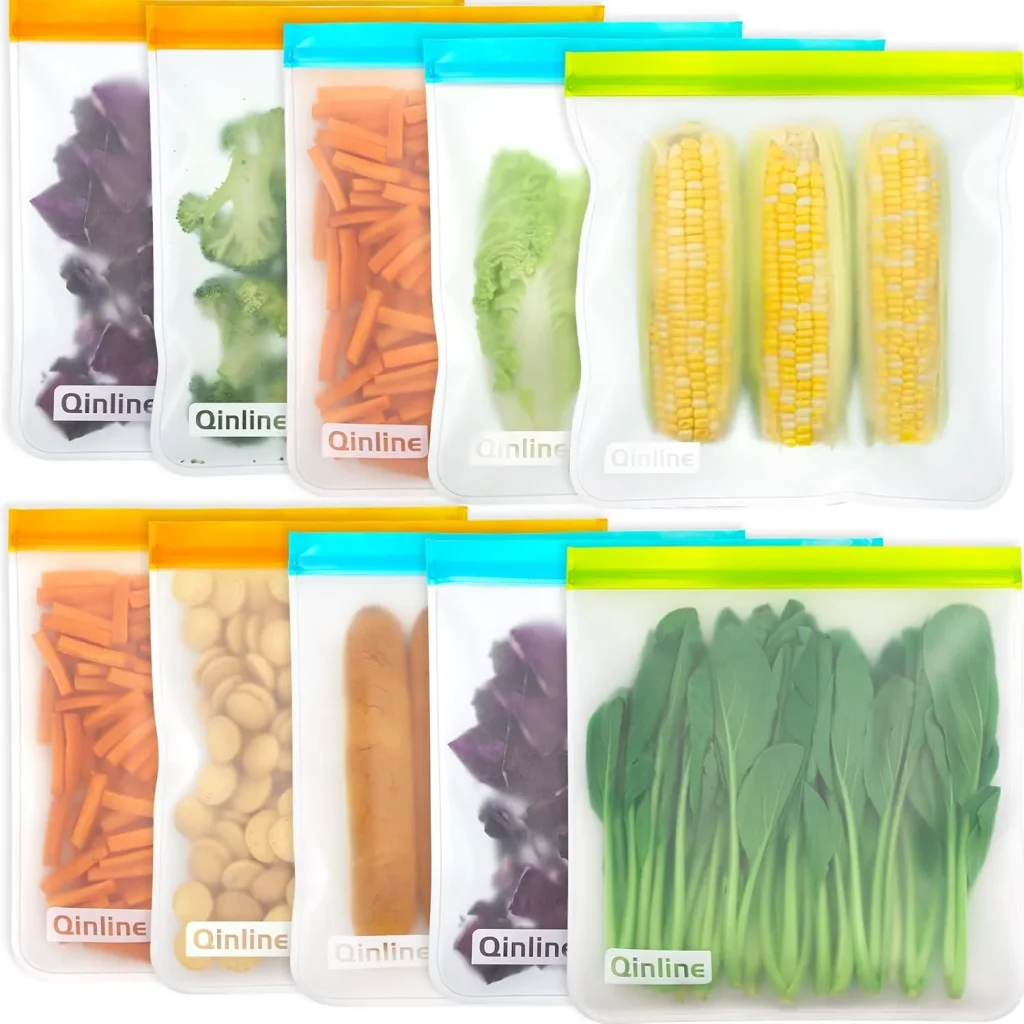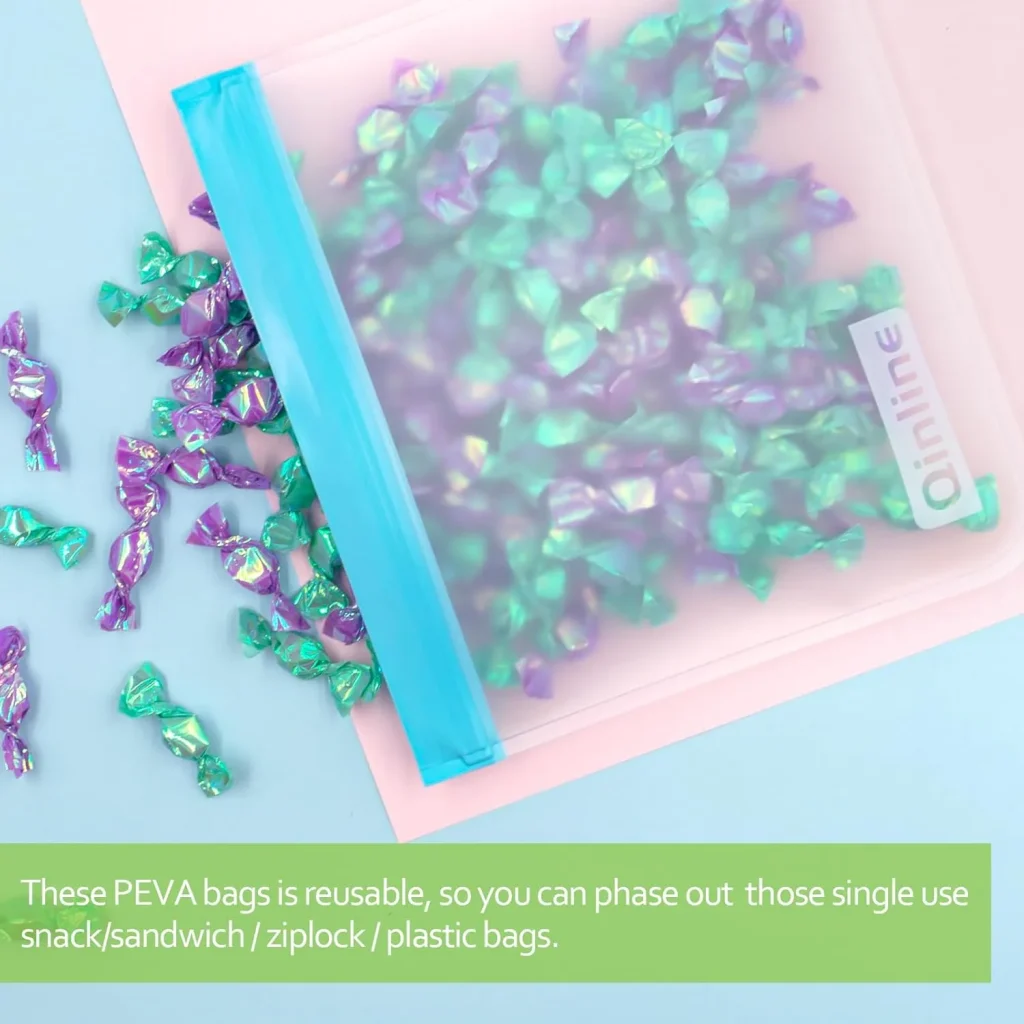
Table of Contents
Food Storage Bags
The environmental impact of single-use plastics has become impossible to ignore in our household. After calculating that we were discarding approximately 500 plastic bags annually, we committed to finding a sustainable alternative that wouldn’t compromise convenience. Three months ago, we purchased the Qinline Reusable Food Storage Bags set, consisting of 10 bags in varying sizes and vibrant colors. Since then, we’ve integrated them into our daily food storage routine, testing their functionality across diverse scenarios—from freezing seasonal berries to packing school lunches and storing marinated proteins. This review documents our comprehensive experience with these reusable storage solutions, evaluating their practical performance against the manufacturer’s claims and our family’s specific needs.
Features
The Qinline Reusable Food Storage Bags offer several notable technical specifications:
- Material Composition: Constructed from food-grade PEVA (Polyethylene Vinyl Acetate), certified BPA-free and recyclable
- Size Variety: Includes 2 gallon bags (11″×10.9″), 4 sandwich bags (8.6″×7.6″), and 4 snack bags (8.6″×5.2″)
- Closure Mechanism: Features double-zipper sealing technology with anti-slip design elements
- Temperature Tolerance: Rated safe for freezer environments (down to approximately -20°F)
- Color Options: Available in orange, blue, and yellow combination pack
- Transparency Level: Semi-transparent construction allows visibility of contents
- Edge Construction: Reinforced seams for enhanced durability and tear resistance
The manufacturer has strategically designed these storage solutions to provide sustainable alternatives without sacrificing functionality, addressing common pain points associated with reusable storage options.

Benefits
Implementing these reusable bags into our kitchen ecosystem has yielded several quantifiable advantages:
- Environmental Impact Reduction: We’ve eliminated approximately 125 single-use plastic bags from our waste stream in just three months of ownership.
- Economic Efficiency: Despite the higher initial investment ($24.99), we’ve calculated a break-even point at approximately 4 months of use compared to purchasing disposable alternatives.
- Storage Optimization: The flat design when empty occupies 75% less cabinet space than rigid container alternatives, maximizing our limited kitchen storage.
- Food Freshness Extension: Marinated chicken stored in these bags retained flavor integrity noticeably better than when stored in rigid containers, with more consistent absorption of marinade.
- Versatility Enhancement: The three size options have eliminated the need for multiple storage systems, streamlining our food storage approach while maintaining functionality across various food types.
Product’s Pros and Cons
Our Personal Opinion
After three months of intensive daily use, these reusable storage bags have fundamentally transformed our kitchen workflow and environmental impact. The transition from disposable to reusable required some adaptation—particularly regarding the cleaning and drying process—but quickly became second nature.
The most impressive aspect has been their leak-proof performance. We tested this extensively by storing marinated meats, transporting salad dressings, and freezing fruit compotes. Even when tipped sideways in lunch bags during commutes, the double-zipper system maintained complete integrity without a single instance of leakage.
For freezer storage, these bags have outperformed our expectations. Seasonal berries frozen in July maintained excellent flavor and texture when defrosted in September, without the crystallization typically experienced with single-use freezer bags. The flat storage capability maximizes our limited freezer space—allowing us to store approximately 30% more frozen items through efficient stacking.
The size variety deserves particular commendation. The sandwich-sized bags perfectly accommodate our children’s school lunches, while the gallon bags have proven ideal for bulk food preparation and marinade applications. This versatility has eliminated the need for multiple storage systems, streamlining our kitchen organization considerably.
While the hand-washing requirement initially seemed burdensome, we’ve developed an efficient cleaning routine using bottle brushes. The manufacturer’s recommendation to air dry the bags on cups works effectively, though it temporarily occupies counter space.

FAQS
How long does the cleaning and drying process typically take?
Cleaning requires approximately 60 seconds per bag using a bottle brush. Complete drying takes 3-4 hours when placed over cups in a well-ventilated area.
Do the bags retain food odors after washing?
We’ve stored everything from garlic-marinated chicken to strawberries without experiencing odor transfer between uses after proper washing.
How do these compare to silicone food storage bags?
The PEVA material offers greater flexibility and lighter weight than silicone alternatives we’ve tried, while maintaining comparable durability.
Can the bags stand upright when filled?
The gallon and sandwich sizes can stand upright when filled approximately 75% full with solid or semi-solid contents, but require support when containing liquids.
How visible are the contents through the semi-transparent material?
Contents are easily identifiable in good lighting, but in freezer environments, we recommend labeling for optimal organization.
Final Recommendation

Based on our extensive three-month evaluation, we confidently award the Qinline Reusable Food Storage Bags a 9/10 rating. The minor deductions reflect only the hand-washing requirement and limited heat tolerance, neither of which significantly compromises their exceptional functionality for most household applications.
For families seeking to reduce environmental impact without sacrificing convenience, these bags represent an outstanding investment. Their durability suggests they’ll easily surpass the manufacturer’s claim of replacing 350+ disposable bags each, delivering both ecological and economic benefits. The combination of thoughtful design features—particularly the effective double-zipper closure and reinforced edges—addresses the common pain points that typically discourage adoption of reusable alternatives.
While the initial investment is higher than disposable options, the break-even point arrives quickly for regular users. Our experience confirms that these bags deliver genuine value while substantially reducing household plastic waste—a rare combination of practical functionality and environmental responsibility that truly deserves recommendation.




